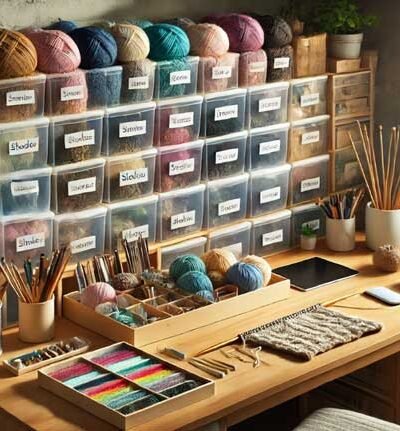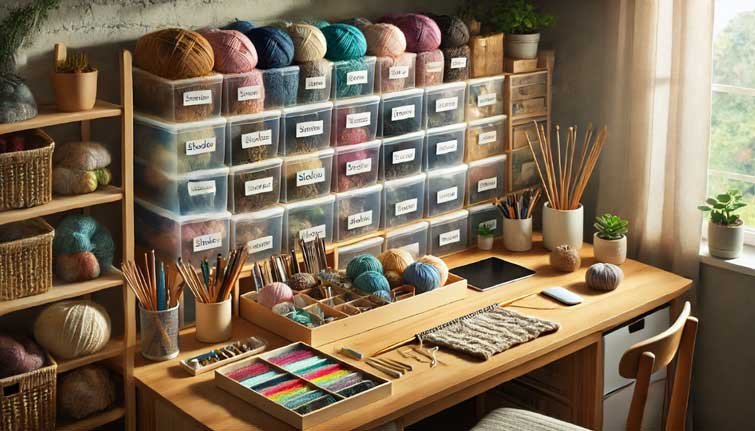Knitting is a relaxing and creative hobby, but it can quickly become frustrating without proper organization. Misplaced needles, tangled yarn, and missing stitch markers can disrupt your workflow and take the joy out of knitting. Keeping your knitting supplies well-organized will save time and enhance your efficiency, allowing you to focus on your projects without unnecessary distractions. By implementing a simple and structured system, you can ensure that everything has its place, making it easy to start knitting whenever inspiration strikes.
Use clear storage containers for easy visibility
Storing knitting supplies in clear containers lets you see what you have at a glance. Transparent bins or jars help prevent the hassle of digging through piles of materials to find what you need. Use stackable plastic containers or glass jars to store small accessories like stitch markers, tapestry needles, and buttons. Label each container to make it even easier to locate your supplies.
Keep knitting needles sorted by type and size
Knitting needles come in different sizes and materials, so organizing them properly is essential. Use a needle case, roll-up fabric holder, or a designated drawer to separate circular, straight, and double-pointed needles. Investing in a needle gauge can also help you identify sizes quickly. Properly sorted needles reduce searching time and keep your tools in good condition.
Store yarn properly to prevent tangling
Yarn storage plays a crucial role in maintaining efficiency. Keep your anti-pilling acrylic yarn in a dry, dust-free space, such as a shelf, basket, or cubby system. Use clear plastic bags or zippered pouches to prevent tangling and protect yarn from dust and pests. Arranging yarn by color, weight, or fiber type ensures quick selection when starting a new project.
Keep frequently used accessories within reach
Every knitting project requires essential accessories such as stitch markers, measuring tapes, and embroidery scissors. Store these frequently used items in a small container or a drawer near your knitting space. Keeping them within reach ensures you do not waste time looking for them while working on a project.
Use project bags to keep ongoing projects separate
Knitting multiple projects simultaneously can lead to confusion and misplaced supplies. Using project bags for knitting helps keep each project organized with its respective yarn, pattern, and tools. This way, you can easily switch between projects without losing track of materials or progress.
Create a designated knitting workspace
Having a dedicated knitting area improves efficiency and organization. Whether it is a small corner in your living room or a separate craft room, having a specific place for knitting allows you to store supplies systematically. Use shelves, baskets, and organizers to keep everything in order and ensure a clutter-free workspace.
Regularly declutter and reorganize supplies
Over time, knitting supplies can accumulate, leading to unnecessary clutter. Set aside time every few months to declutter, donate unused yarn, and reorganize your materials. Keeping your supplies updated and neatly arranged ensures a stress-free knitting experience.
You can maintain a tidy and efficient knitting space by following these simple yet effective organization strategies. An organized setup lets you enjoy knitting without distractions, making each project more enjoyable and productive.





Leave a Reply